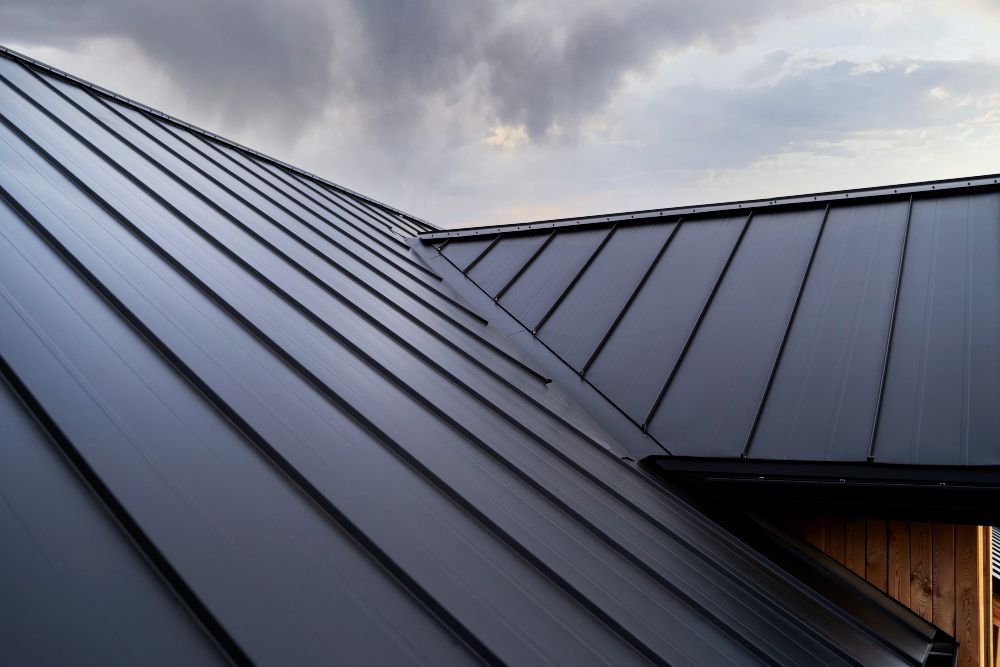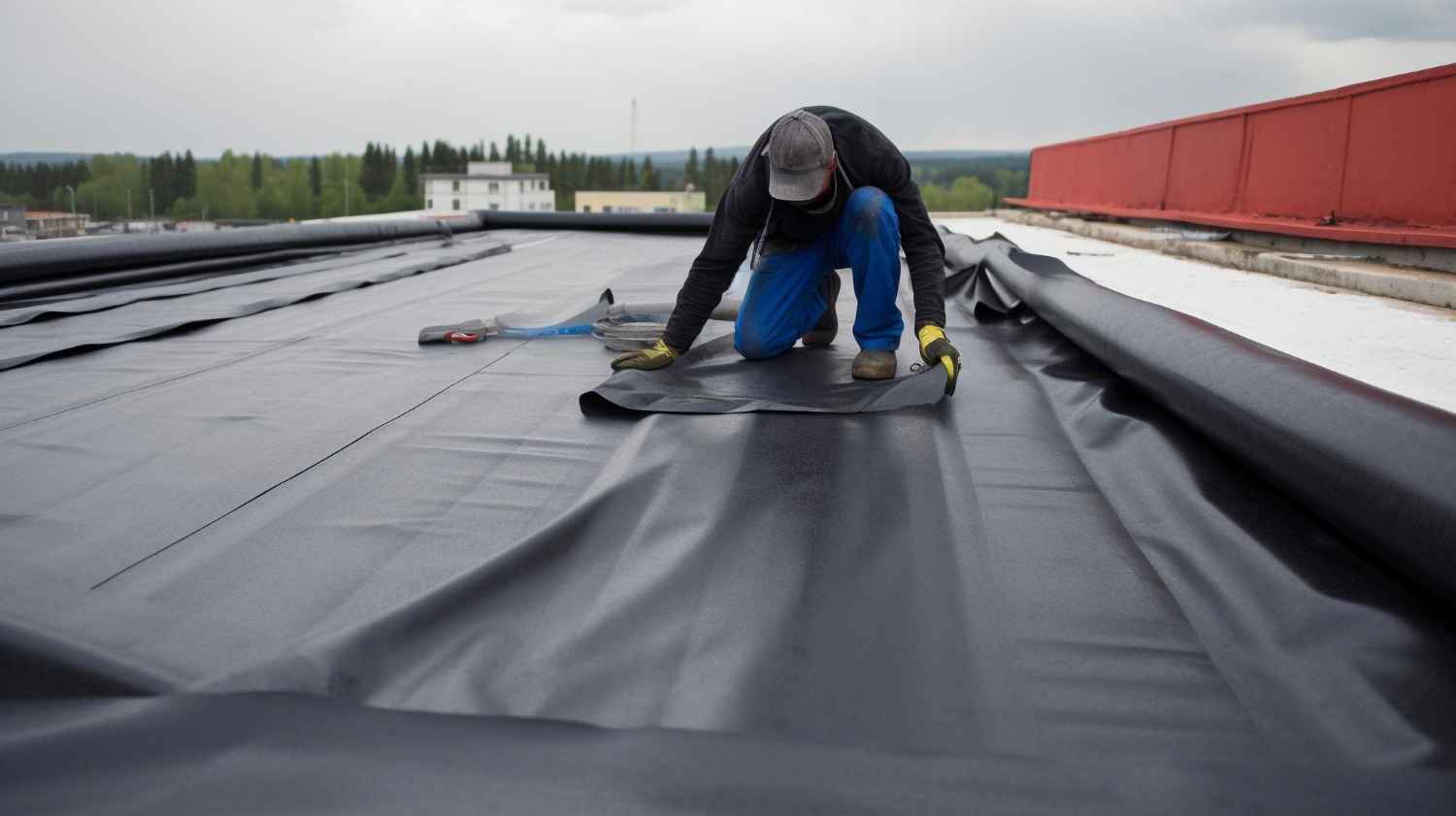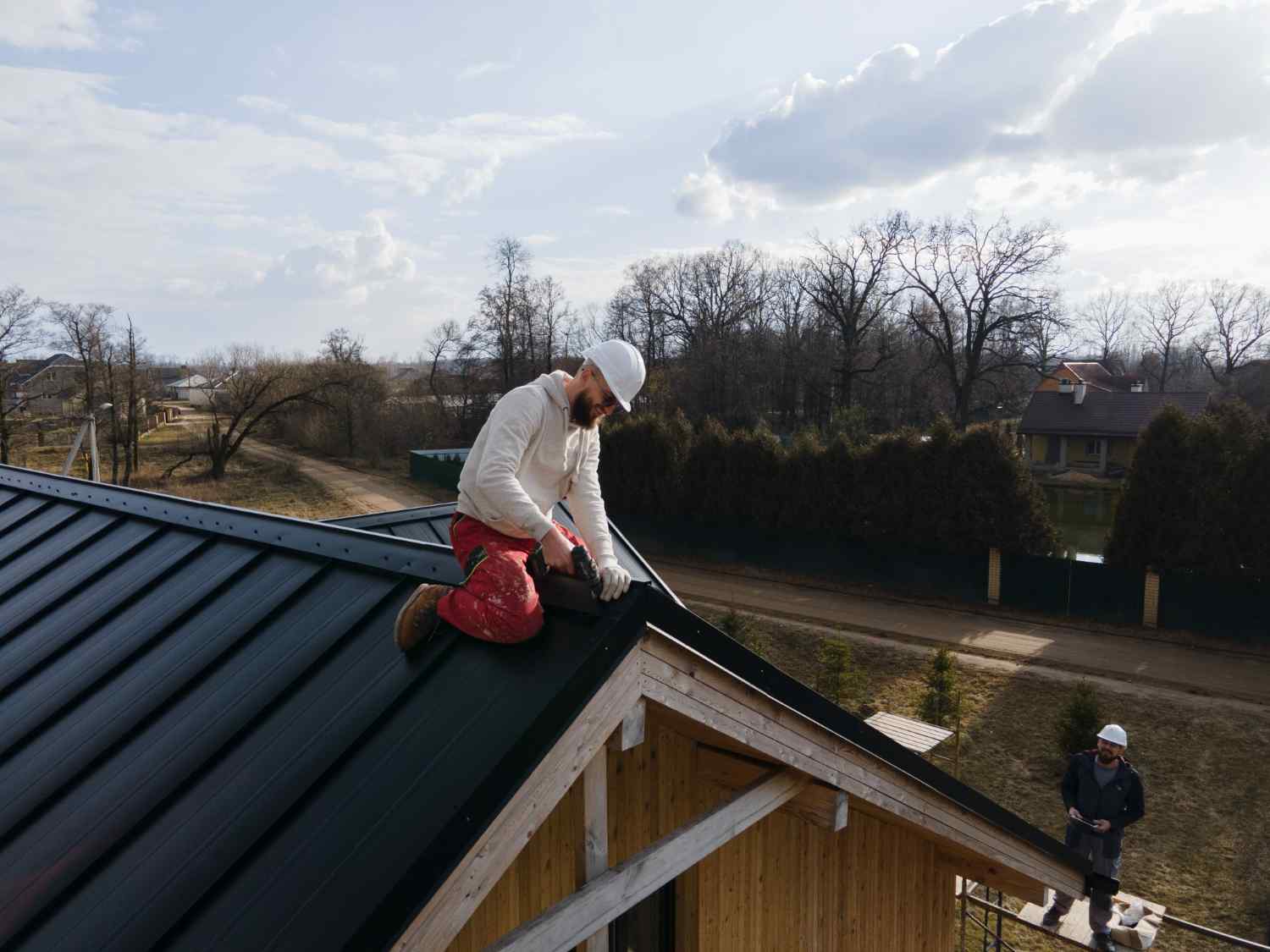What is the Best Material for a Flat Roof in the UK?
Table of Contents

When it comes to choosing the best material for a flat roof in the UK, several factors must be taken into consideration. The UK’s diverse climate, characterised by frequent rain and varying temperatures, imposes specific requirements on roofing materials to ensure durability, insulation, and water resistance. This article helps you explore different options available for flat roofing, highlighting their pros and cons. It ultimately aims to guide homeowners and builders towards making informed decisions that suit their specific needs and environmental conditions.
Top 5 Flat Roof Materials
When choosing flat roof materials for your garages or sheds, there are several options to consider. It is crucial to choose the right materials to ensure your flat roof is efficient and waterproof. The roof materials can affect your home’s look, roof durability, ability to resist leaks, and overall value. Remember, each type of flat roofing material has its pros and cons. Here are five of the best flat roof materials available in the UK, rated by cost, durability, and lifespan.
EPDM Rubber (Ethylene Propylene Diene Monomer)
EPDM is a flexible, rubber-like material. This feature allows EPDM roofing to be easily installed on uneven roofs and around structures, like skylights and pipes. Its durable rubber composition makes it resilient to potential damage that might be caused due to falling of heavy objects or impacts. Additionally, its flexibility minimises the risk of cracks, as it can expand and contract significantly—Firestone EPDM can stretch up to 300% in length before reverting to its original size.
EPDM rubber is rapidly gaining popularity as a flat roofing material in the UK. EPDM roofing is both breathable and waterproof, allowing heat and moisture to escape while blocking unwanted vapours from entering the roof. This helps in preventing moisture buildup that can also cause dampness, rot, and damage. Because of its excellent waterproof quality, EPDM is used for roofing and also for seals and pond liners. It can also resist saltwater, making it a good choice for properties located in coastal areas.
Pros
- Resilient in both low and high temperatures
- Great Lifespan
- Highly Durable
- Affordable
- Utilised in various spaces
- Minimal Upkeep
Cons
- Susceptible to damage
- Seam failures may arise from improper installation
- Vulnerability to oil contaminants
- Easily defaced
GRP (Glass-Reinforced Plastic) Fibreglass
Glass-reinforced plastic (GRP) roofing is becoming popular for homes and businesses. It is a robust, easy-to-maintain and cost-effective option, and it also ranks among the best for durability and longevity.
GRP fibreglass is a great option for homeowners who have a plan of staying in their houses for a long time. This roofing type lasts at least 30 years and often longer. It is durable and usually doesn’t get damaged easily, except in rare cases. Therefore, choosing GRP fibreglass roofing is a smart decision for the future. Like EPDM, GRP roofing requires minimal maintenance.
One of the main benefits of GRP roofing is its strong yet lightweight nature, which means you need less material for great strength. GRP can easily adapt to odd roof shapes and uneven surfaces. It is also very resistant to corrosion, making it a good choice for roofs near factories and commercial buildings that use chemicals.
Pros
- Flexible and durable flat roofing material
- High tensile and compressive strength
- A variety of colours
- Easy repairs
- Lifespan of approximately 25 years
Cons
- Not the best choice for a large flat roof
- Installation depends on good weather conditions
- Vulnerable to harm when stepped on directly
- Temperature fluctuations can gradually damage panels over time


PVC (Polyvinyl Chloride)
Polyvinyl Chloride (PVC) is a type of plastic made from a chemical reaction between ethylene, hydrochloric acid, and oxygen. When used for flat roofing, PVC is made more flexible, making it easy to maintain and very durable.
PVC is a common material for flat roofs. It comes as a membrane that can be rolled out and secured with nails or adhesives. It resists chemicals and fire, making it popular for commercial roofs. When installing PVC, the seams are heat-welded for keeping the roof watertight. Although it is lightweight, PVC offers greater durability and has a lifespan of almost 20 years.
A major downside of PVC roofing is that it doesn’t stick to asphalt. Flat roofs usually use different materials and hot asphalt is often put on top of the membrane. This means you need to keep PVC separate, which makes installation harder. Also, replacing a PVC roof is more labour-intensive than other materials. Additionally, producing PVC roofing can release harmful toxins like dioxin, which may cause health problems.
Pros
- Chemical & fire resistance
- Waterproofing
- Long-lasting
- Suitability for commercial buildings
- Lightweight
Cons
- Incompatibility with asphalt
- Toxicity
- Roof replacement complications
Roofing Felt
Roofing felt is a popular choice for flat roofs in Britain because it is affordable, easy to install, and simple to repair. It provides strong protection against weather, helping to prevent damage. Roofers can quickly fix issues by removing and patching damaged areas, which is helpful for first-time homeowners on a budget.
Felt roofing is very flexible and can be used for different types of buildings, like garages and sheds. However, one main downside is that it can be easily damaged, leading to a shorter lifespan of about 10 to 20 years.
Pros
- Cost-effective option
- Reduction of heat flow
- Leakage prevention
- Ability to recycle
- Resistance to UV rays and heat
- Easy to install
- Lightweight
- Accessible to repair
Cons
- Limited durability
- Odorous fumes during installation
- Lingering unpleasant smell for several days
- Inconsistent and messy repairs; vulnerable to heavy foot traffic
- Requirement for frequent inspections and maintenance
- Vulnerability to high temperatures, leading to fatigue
Coping Stones
Coping stones are flat stones placed on top of free-standing walls. They help keep rainwater from getting into the wall. Once installed, they provide a durable and attractive finish that improves the look of your property while also offering practical benefits. Their main job is to protect the top surface of the wall from rain and weather damage and to prevent rainwater from seeping into the wall, which can weaken it over time.
Coping stones are slanted to drain water efficiently, prevent moisture from getting into the wall, and lower the chance of erosion. They also help the wall last longer, which cuts down the costs and time required for repairs.
Pros
- Ultimate protection against elements
- Aesthetically pleasing option
- Highly durable
Cons
- High cost
- Requires minimal maintenance over time
- Substantial weight
Conclusion
When considering the best materials for flat roofs in the UK, factors such as weather resistance, durability, and cost-effectiveness play crucial roles. Materials like EPDM rubber, PVC, GRP, coping stones and roofing felt are commonly favoured due to their proven performance in the UK’s climate. Each option has its own advantages and limitations, so it’s essential to assess specific needs and budgets before deciding to ensure a successful flat roofing solution.
